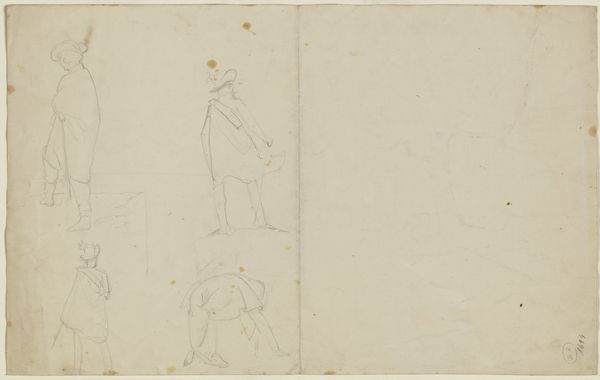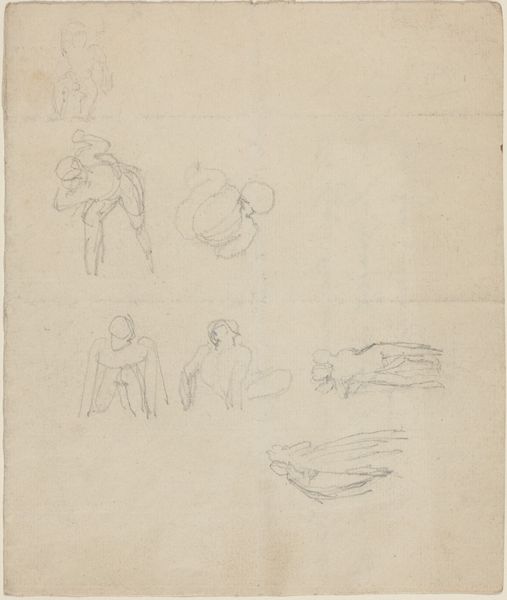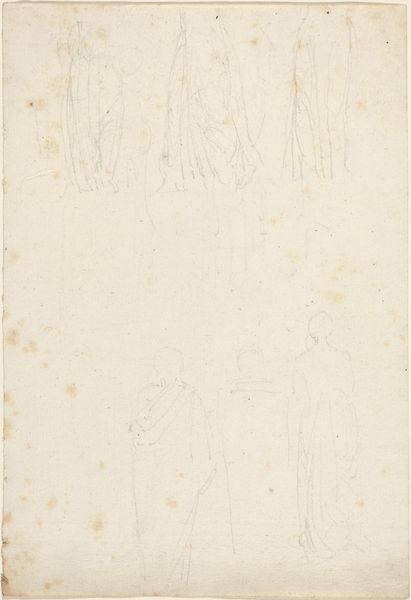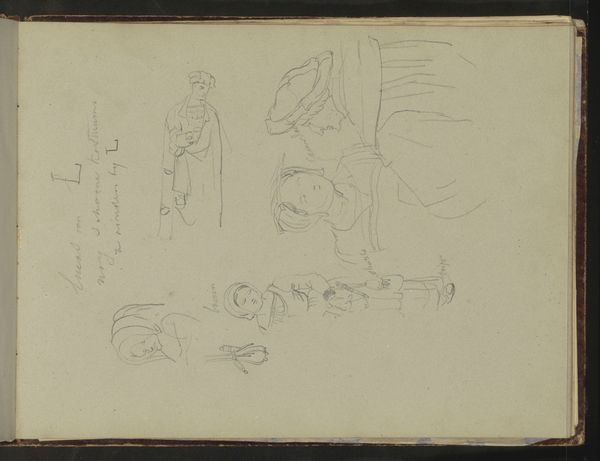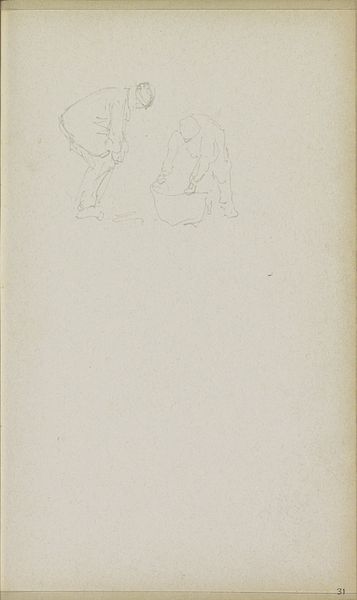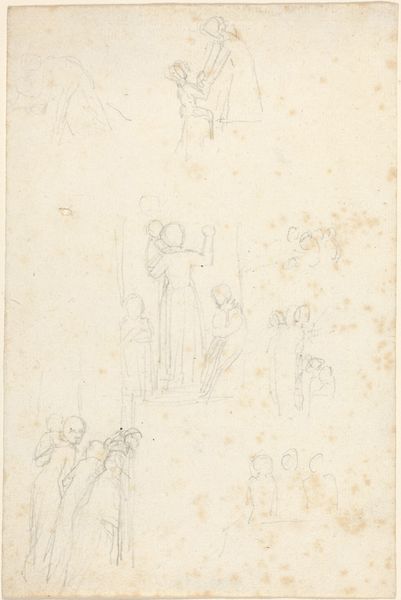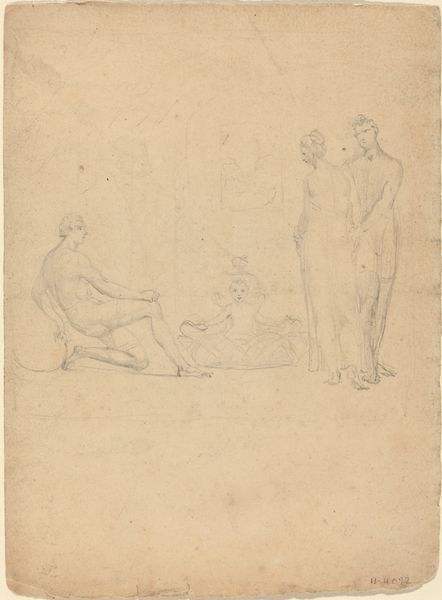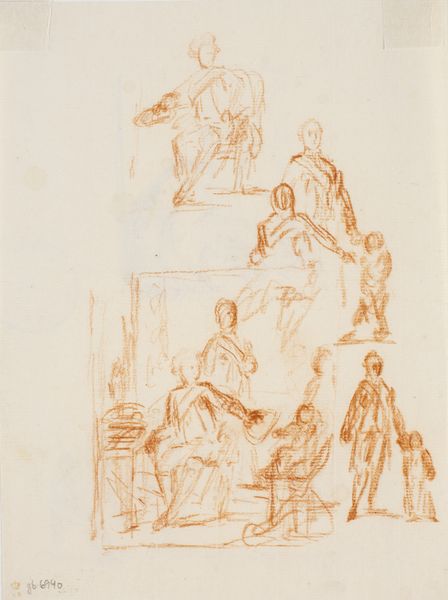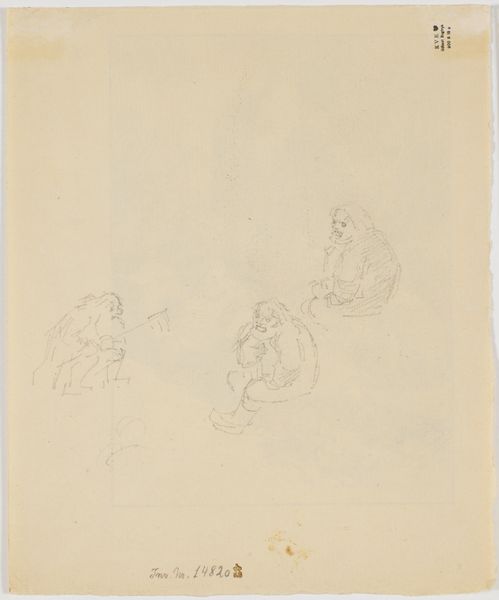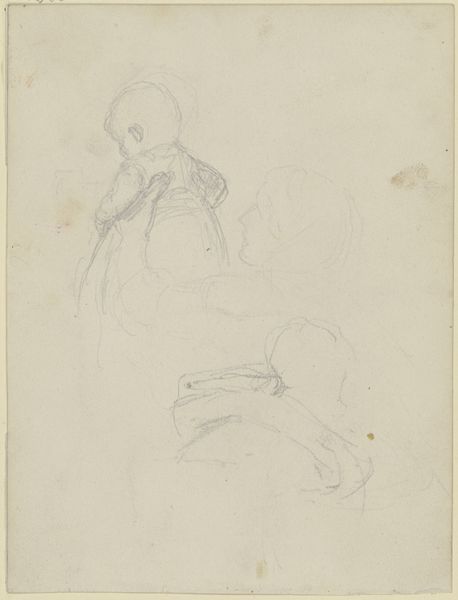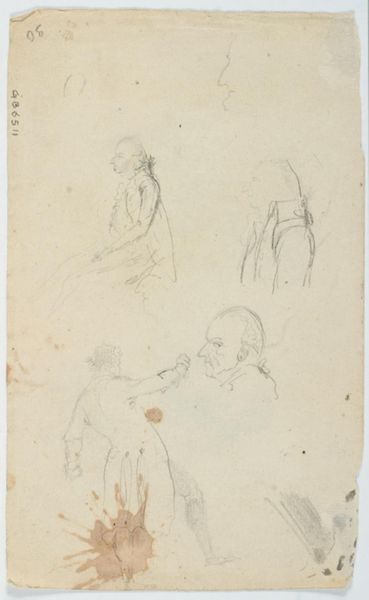
drawing, dry-media, pencil
#
portrait
#
drawing
#
figuration
#
dry-media
#
pencil
#
pencil work
Dimensions: 301 mm (height) x 200 mm (width) (bladmaal)
Curator: Immediately, I’m struck by the fragility and the tentative nature of the lines; it's a series of delicate impressions. Editor: Indeed. This sheet of studies, aptly titled "Fire Figurstudier," from somewhere between 1760 and 1780, offers an intimate look into the artistic process of C.A. Lorentzen. Housed here at the SMK, it is an unassuming pencil drawing. Look closer to understand that these figure studies explore form and composition. The arrangement, the relationships... it's all quite captivating in its subtlety. Curator: Absolutely, there's a beautiful austerity, almost an ethereality about it. You have a distinct focus on structure but my own experience of such studies leads me to wonder about the labour that constitutes the art; I feel drawn to ask—how does the context of instruction around drawing impact the work here? Editor: Setting aside external references for a moment, observe how the artist uses light and shadow to define the figures. The positioning, how figures are rendered with the lightest touch. Are these sketches preparatory exercises, warm-ups perhaps? Curator: I want to pause here. We need to acknowledge the role of the artist and understand more deeply, where did Lorentzen gain their education and instruction. These things inform how drawings are then turned into art, particularly during this period, but let's delve into that later perhaps. I also consider what it must mean to work in the 'dry media', which has its own set of material properties. Editor: Agreed. Yet these pencil strokes reveal an almost Baroque influence, the dynamism implied, if only lightly touched. I think there's an undeniable beauty, in these nascent forms; there is almost a desire here to grasp the ideal, a human archetype. We should remember, too, the formal function of these studies to produce portraits that reflected and constructed elite power at the time. Curator: Ultimately, in experiencing these works it provokes much reflection upon how social standing can influence all aspects of artistic production even with humble media like the pencil. It brings this 'high' art much closer to practices of making and doing that involved people in broader society at this time. Editor: And on closer reflection, the piece serves as a potent example of how simple formal decisions elevate the rudimentary to the refined, don’t you think? The elegance is remarkable.
Comments
No comments
Be the first to comment and join the conversation on the ultimate creative platform.
